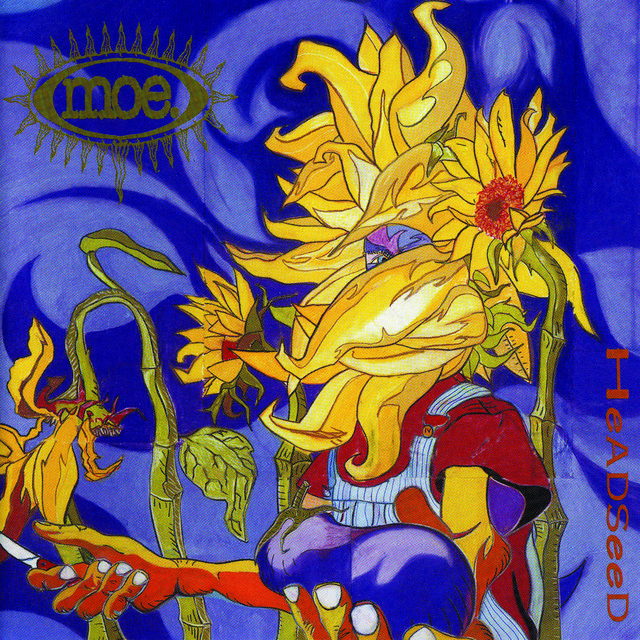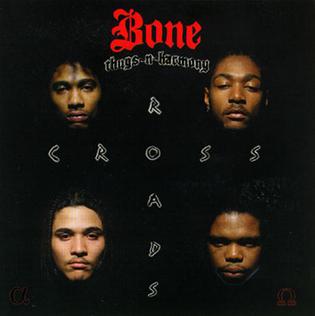 Spacehog’s “Cruel To Be Kind,” released as part of the band’s 1995 album Resident Alien, stands as a distinctive fusion of glam rock sensibilities, alternative rock energy, and sardonic lyrical wit. Known for their ability to blend the theatricality of 1970s glam with the edgy sensibilities of 1990s alternative, Spacehog carved out a niche with their audacious sound and charismatic approach. “Cruel To Be Kind” exemplifies this balance, combining memorable hooks, angular guitar riffs, and a playful yet incisive lyrical narrative. The track is emblematic of Spacehog’s artistry: a clever, stylish, and audibly confident exploration of romantic tension, societal expectations, and the complexities of interpersonal dynamics, cementing its place as a standout in the band’s catalog and a defining piece of mid-’90s alternative rock.
Spacehog’s “Cruel To Be Kind,” released as part of the band’s 1995 album Resident Alien, stands as a distinctive fusion of glam rock sensibilities, alternative rock energy, and sardonic lyrical wit. Known for their ability to blend the theatricality of 1970s glam with the edgy sensibilities of 1990s alternative, Spacehog carved out a niche with their audacious sound and charismatic approach. “Cruel To Be Kind” exemplifies this balance, combining memorable hooks, angular guitar riffs, and a playful yet incisive lyrical narrative. The track is emblematic of Spacehog’s artistry: a clever, stylish, and audibly confident exploration of romantic tension, societal expectations, and the complexities of interpersonal dynamics, cementing its place as a standout in the band’s catalog and a defining piece of mid-’90s alternative rock.
From the first note, “Cruel To Be Kind” establishes an engaging musical identity. The opening guitar riff, simultaneously catchy and slightly jagged, sets a tone that is both playful and edgy. The interplay between rhythm and lead guitars creates a layered texture, providing both melodic hooks and harmonic depth. The bass and drums lock into a propulsive groove, anchoring the song with a sense of momentum that contrasts with the lyrical tension explored throughout. This instrumental architecture allows Spacehog to explore dynamics, layering subtle flourishes over a solid foundation, creating a track that is musically compelling while retaining accessibility. The instrumentation mirrors the duality of the song’s theme: charm and allure contrasted with the sting of relational complications.
Vocal delivery is central to the track’s impact. Royston Langdon’s lead vocals navigate a range of emotion, blending sardonic wit with melodic sensibility. His phrasing emphasizes the playful irony embedded in the lyrics, alternating between conversational intimacy and theatrical exaggeration. The backing harmonies, characteristic of Spacehog’s sound, enrich the texture and enhance the anthemic quality of the chorus, providing a sonic counterpoint that heightens both drama and accessibility. The vocal performance communicates not only the narrative of the lyrics but also the band’s confident persona, allowing listeners to experience the song’s emotional tension while engaging with its stylistic flair.
Lyrically, “Cruel To Be Kind” explores the paradoxical dynamics of relationships, where affection and friction coexist in an often contradictory interplay. The phrase “cruel to be kind” captures this central tension, highlighting the sometimes necessary harshness or honesty that exists within intimate connections. Lines like “You say you love me, but it’s hard to believe / You do the things you do, you don’t mean to deceive” balance vulnerability with critique, conveying relational complexity in a manner that is both accessible and intellectually engaging. The lyrics are infused with wit and observational sharpness, allowing listeners to recognize their own experiences in the playful yet pointed narrative.
Musically, the song is a testament to Spacehog’s ability to blend multiple rock traditions into a cohesive, forward-thinking sound. Glam rock elements—shimmering guitars, prominent bass lines, and dynamic vocal harmonies—coexist seamlessly with alternative rock’s edgy guitar tones and rhythmic drive. This fusion situates the song firmly within the mid-’90s musical landscape while nodding to classic influences, demonstrating the band’s ability to honor rock heritage while innovating within contemporary stylistic frameworks. The result is a track that is immediately engaging, rhythmically compelling, and melodically memorable.
The track’s arrangement emphasizes tension and release, mirroring the thematic content of relational complexity. Verses are built around tight, rhythmically precise guitar and bass patterns, creating a sense of controlled restraint. Choruses open into broader melodic territory, with harmonies and instrumental layering amplifying the emotional and musical release. Instrumental breaks provide additional texture, allowing the song to breathe and maintain engagement throughout its duration. This careful structuring demonstrates Spacehog’s attention to narrative pacing within music, ensuring that the track communicates both lyrically and sonically with precision and impact.
Production choices on “Cruel To Be Kind” reinforce the band’s aesthetic while enhancing accessibility. The mix balances clarity with warmth, allowing each instrument to occupy its own space without overcrowding the sonic landscape. Guitars are prominent yet textured, bass lines provide rhythmic and melodic foundation, and percussion drives the song with steady propulsion. Vocals are mixed to emphasize both clarity and emotive expression, ensuring that the lyrical wit and melodic charm are front and center. The production enhances the theatricality of the performance while maintaining a sense of immediacy and intimacy, crucial to the song’s effectiveness as both a narrative and musical statement.
The song’s chorus functions as both a melodic anchor and thematic reinforcement. Its memorable hook ensures that listeners are drawn in immediately, while the repeated motif emphasizes the central tension of relational push-and-pull. The anthemic quality of the chorus, combined with layered harmonies and rhythmic accents, creates a moment of emotional release that contrasts effectively with the controlled tension of the verses. This dynamic interplay is central to the song’s impact, providing both engagement and interpretive depth for listeners.
“Cruel To Be Kind” also exemplifies Spacehog’s ability to infuse humor and irony into rock music. The band navigates relational themes without descending into melodrama, instead employing sarcasm, observational wit, and theatrical phrasing to create a track that is entertaining while still emotionally resonant. This approach allows the song to resonate with listeners on multiple levels, engaging both the intellect and the emotions. By blending humor and insight, Spacehog creates a song that is accessible, memorable, and enduringly appealing.
The song’s influence and relevance extend beyond its initial release. Within the mid-’90s alternative scene, “Cruel To Be Kind” demonstrated the potential for bands to integrate glam rock aesthetics with contemporary alternative sensibilities, bridging generational and stylistic divides. Its success inspired other artists to explore similar stylistic fusions, highlighting the enduring appeal of melodic hooks, theatrical instrumentation, and emotionally nuanced lyricism. Spacehog’s track serves as a case study in how careful balance of homage and innovation can yield music that is both commercially viable and artistically distinctive.
Live performances of “Cruel To Be Kind” highlight the band’s charisma and ability to translate studio energy into stage presence. On stage, the song often features expanded instrumental sections, extended vocal harmonies, and heightened rhythmic dynamics, enhancing the playful tension inherent in the lyrics. Audience interaction and call-and-response elements amplify the track’s theatricality, transforming the song into an experiential narrative that engages listeners beyond passive consumption. These live renditions underscore the song’s versatility and the band’s commitment to performance as an extension of musical storytelling.
Culturally, the song resonates with the universal experience of relational complexity. Its exploration of love, conflict, and honesty is accessible across age groups and social contexts, allowing listeners to connect personally with the narrative while appreciating its stylistic flair. The combination of emotional depth, melodic memorability, and rhythmic vitality ensures that the track retains relevance and appeal decades after its release, demonstrating the power of music to capture and communicate nuanced human experience.
The song’s musical structure—its use of tension, dynamic contrast, and harmonic layering—contributes to its lasting appeal. By juxtaposing rhythmic restraint in verses with melodic expansion in choruses, Spacehog mirrors the ebb and flow of emotional experience, allowing listeners to engage with both musical and thematic content. Instrumental embellishments, from subtle guitar fills to layered vocal harmonies, provide additional depth and texture, creating a listening experience that rewards repeated engagement and close attention. This compositional sophistication, combined with lyrical wit, ensures that “Cruel To Be Kind” is both entertaining and musically enriching.
The track’s lyrical and musical interplay exemplifies Spacehog’s approach to songwriting: merging narrative insight with sonic experimentation. By addressing themes of emotional honesty, relational friction, and personal complexity within a framework of glam-infused alternative rock, the band achieves a synthesis of entertainment, reflection, and stylistic innovation. This dual focus on narrative and musicality ensures that the song operates on multiple levels, offering accessibility, depth, and long-term resonance.
The song’s production and arrangement also reflect a broader trend in 1990s alternative rock: the fusion of traditional rock instrumentation with contemporary studio techniques to create a sound that is polished yet emotionally immediate. Reverb, spatial layering, and careful mixing ensure that the track feels expansive without losing intimacy, enhancing both the lyrical and musical storytelling. These production choices allow the song to communicate effectively across mediums—from radio play to live performance—ensuring broad accessibility while preserving artistic integrity.
“Cruel To Be Kind” also serves as a reflection of mid-1990s musical culture, bridging glam rock nostalgia with alternative experimentation. Its aesthetic—stylish, slightly ironic, and musically adventurous—situates it within a broader context of bands seeking to honor rock traditions while innovating for contemporary audiences. Spacehog’s execution demonstrates an understanding of both musical heritage and audience expectation, achieving a balance that is immediately engaging and stylistically distinctive. This fusion of past and present contributes to the song’s enduring appeal and influence within alternative rock.
Ultimately, Cruel To Be Kind by Spacehog is a masterful blend of melodic charm, lyrical wit, and musical sophistication. Its fusion of glam rock theatrics with alternative rock edge creates a track that is both accessible and artistically ambitious. The song’s exploration of relational dynamics, humor, and emotional honesty is enhanced by careful arrangement, dynamic production, and charismatic performance, ensuring its resonance across audiences and decades. Its enduring appeal lies in its ability to entertain, provoke reflection, and celebrate musical creativity, making it a defining track in Spacehog’s catalog and a highlight of 1990s alternative rock.
From the first angular guitar riff to the last harmonic flourish, “Cruel To Be Kind” exemplifies Spacehog’s ability to merge wit, emotional insight, and stylistic boldness into a cohesive musical statement. Its playful yet pointed narrative, memorable hooks, and dynamic instrumentation ensure that it remains a beloved piece of alternative rock history, capable of engaging listeners both intellectually and emotionally. The track stands as a testament to the band’s artistry, bridging eras and genres while delivering a timeless exploration of the complexity and humor inherent in human relationships.
Whether heard in the studio recording or experienced live, Cruel To Be Kind by Spacehog remains a compelling example of mid-1990s alternative rock: confident, witty, and musically inventive. Its blend of theatrical flair, melodic sophistication, and emotional resonance ensures its place as a standout in the era’s musical landscape, a song that continues to charm, engage, and captivate audiences with its unique fusion of glam rock swagger and alternative edge.


